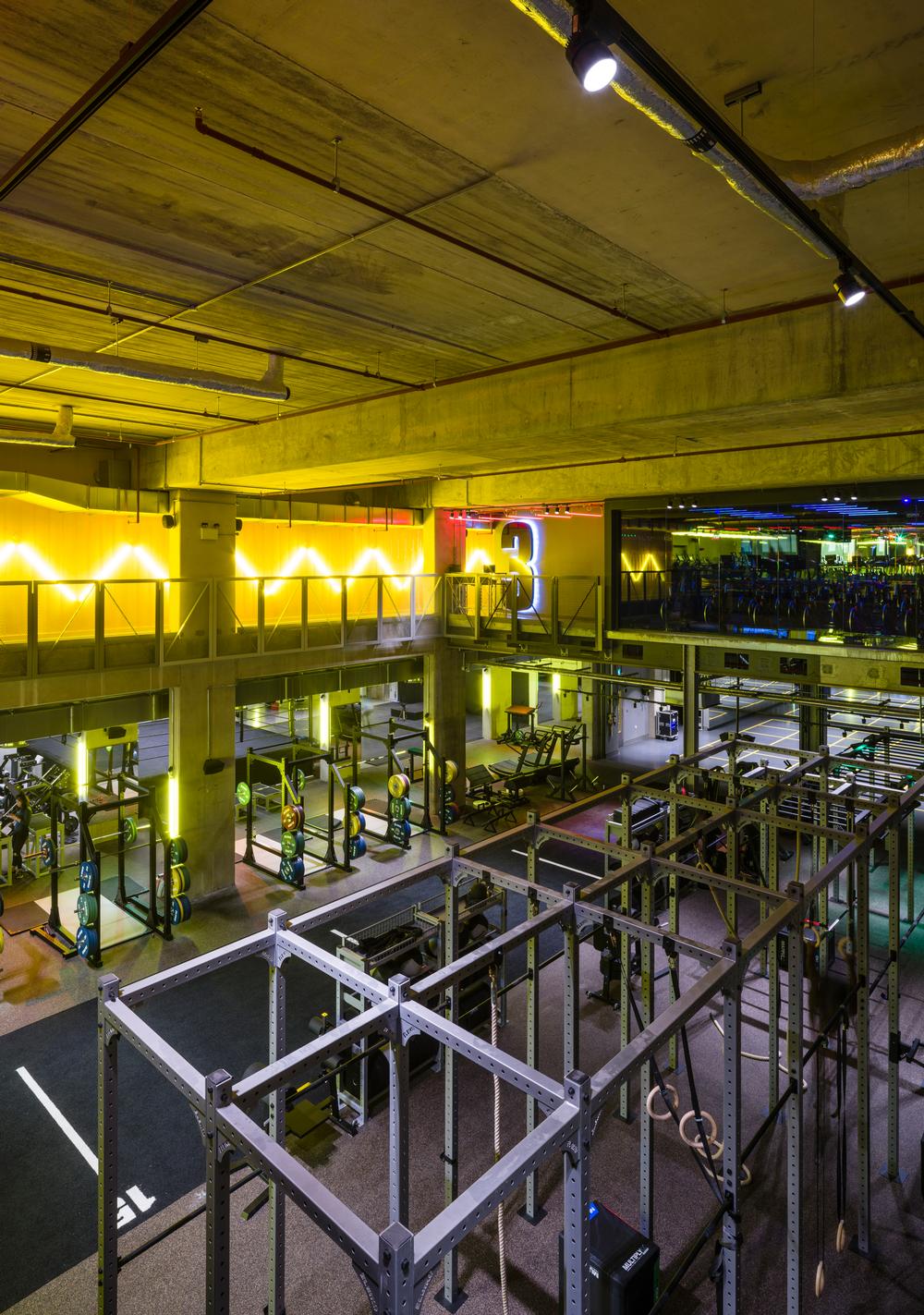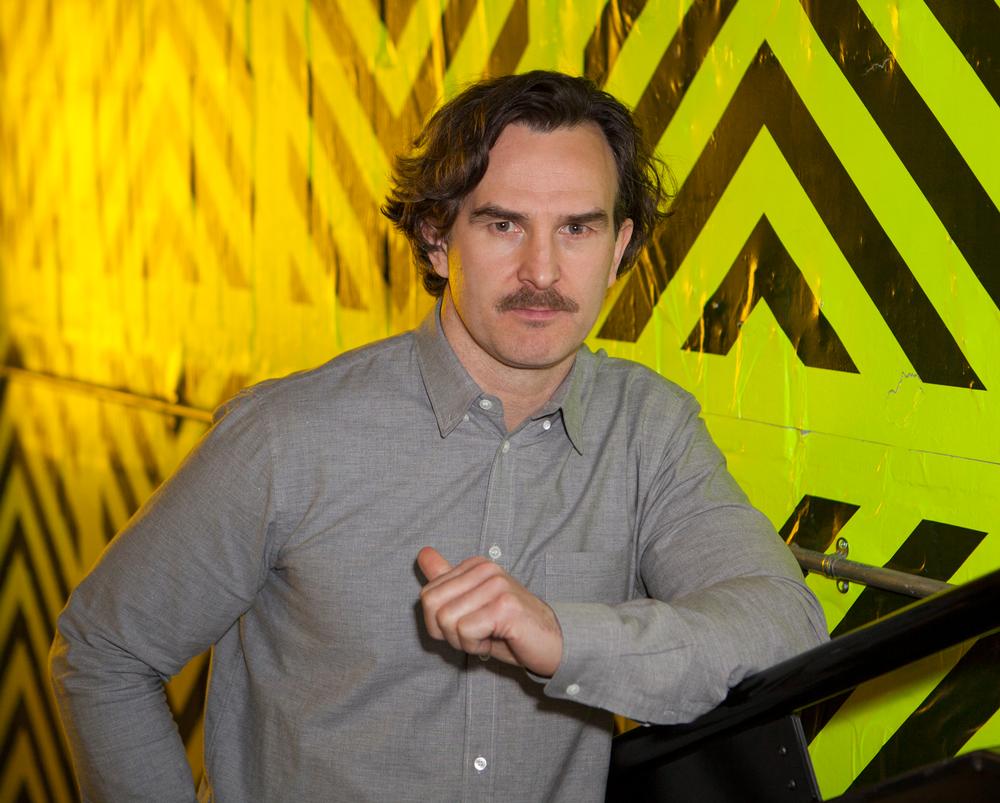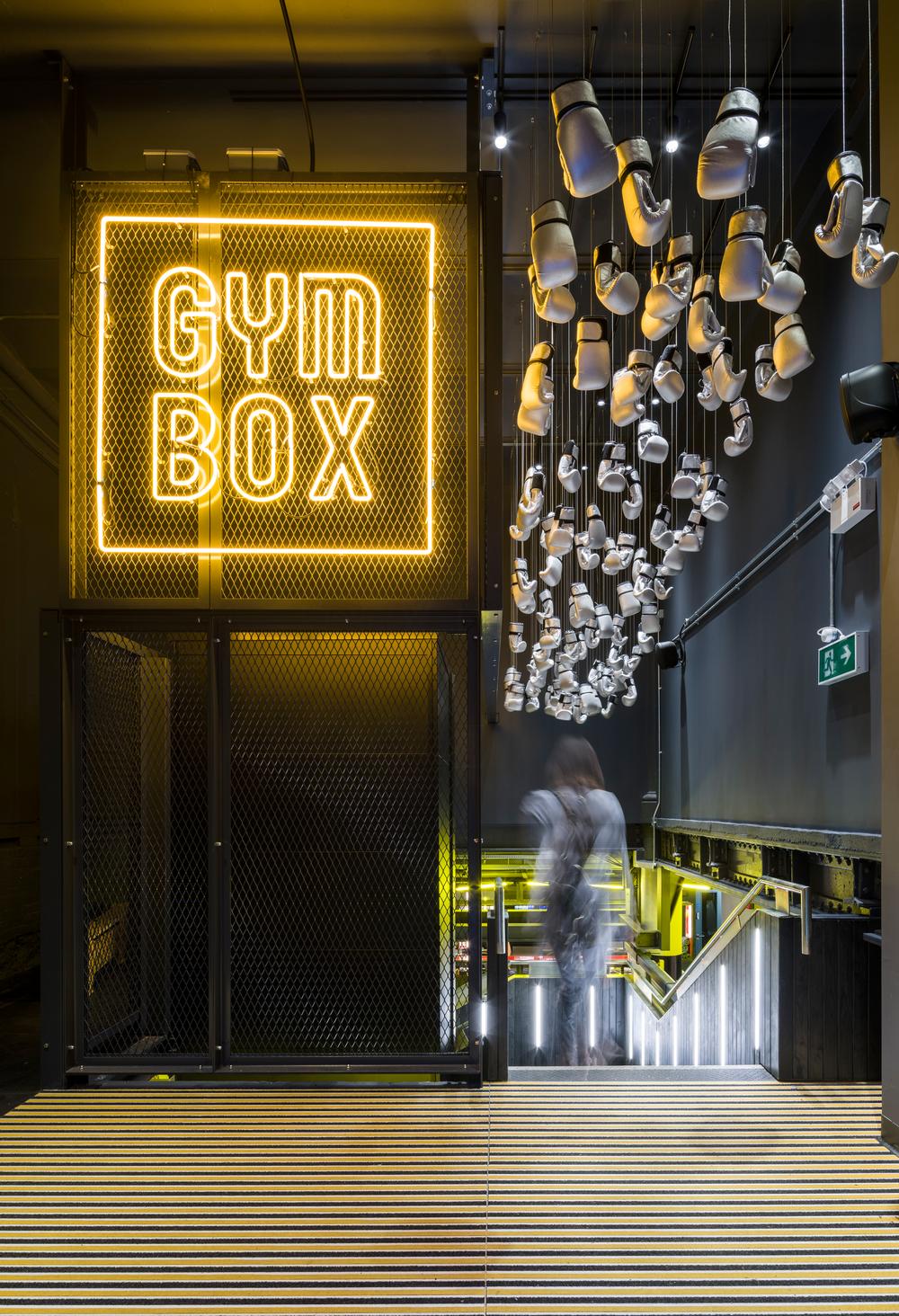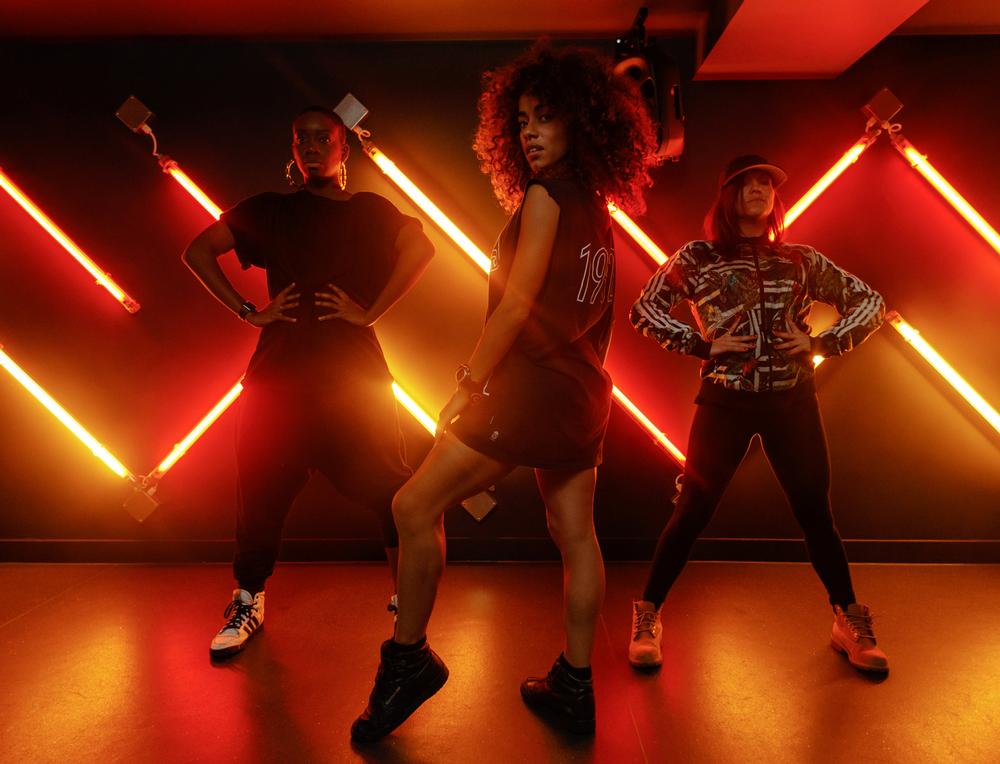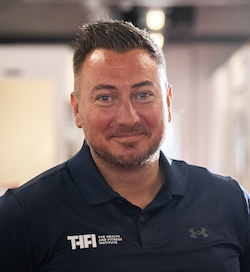What’s Gymbox all about?
Since the opening of our first club in Holborn, in September 2003, Gymbox has really been the original boutique.
Group exercise lies at the heart of what we do, and our view is that every single one of our studios should be market-leading, whether it’s yoga or boxing or bootcamp or whatever. But where we differ from the boutiques is that we don’t just focus on excellence in one discipline: our members also get an amazing gym space and numerous other studios. In each club, we’ll have four or five unique spaces dedicated to particular types of exercise – and that includes things people just won’t get elsewhere, such as aerial studios where we can run circus classes using the trapeze, aerial yoga and pilates, and so on.
This model has always been what sets Gymbox apart.
What makes your group exercise special?
Let’s start with the design of our studio spaces. These have to feel immersive, and each studio has to perfectly accommodate the classes it will host, with a great balance between design and functionality: high ceilings for our aerial classes, for example, and careful attention to detail on temperature for our holistic classes. We then work with our interior designers and lighting designers to create unique spaces, all designed around the classes that will run in there.
Then there’s our instructor base, for which we hold weekly auditions to make sure we have the best people on-board. Sometimes we don’t even have places to fill, but when we find great people we make room for them. That’s how you find your stars, through an ongoing audition process rather than just looking for them when you need them.
We also have a team of master trainers, and importantly it’s one per discipline, so we have really specialist people overseeing the performance of each class, training all new instructors and ensuring new ideas are crafted into classes that are not only creative and engaging, but also effective and credible.
We also have our creative team, who come up with all these new ideas to ensure our offering is constantly evolving. They’re uncovering new ways to exercise and new class formats we can bring into our studios to ensure we’re always innovating.
How do you draw the line between creativity and gimmicks?
Our approach has always been to combine design and credibility, so we have visually spectacular clubs and eye-catching classes, but also aim to deliver a really great, effective product.
From the outset, that approach was underpinned by the relationship between Richard Hilton, founder of Gymbox and myself. Richard’s background was in advertising and marketing, so his passion and expertise lie in creating brands and developing the ‘sizzle’ around the product, while my background was more on the fitness side of things, so I always want to make sure whatever product we put out there is as good, as effective, as authentic as possible.
Even though Richard has now stepped back from the business, that’s still the approach behind everything we do. There’s nothing worse than getting excited by amazing marketing and advertising, only to be let down by the product. At Gymbox, the advertising and branding has always been strong, but we also deliver on the product: you walk through the door and it absolutely lives up to the advertising.
How has Gymbox evolved?
Our Holborn club was revolutionary when it opened in 2003, because the look and feel was very different. We wanted the design to mirror our formula of ‘entertainment meets exercise’. We also didn’t want to look like anything else already out there, which is why we chose to work with architects Ben Kelly, who designed the iconic Haçienda nightclub in Manchester, and Patrick McKinney, rather than a gym designer.
Instead of doing combat classes in the studio tucked away in the corner, for example, we had Olympic-size boxing rings on the gym floor. We paid a lot of attention to the lighting and the music. We used materials that gave the club a gritty, industrial chic that suited the London market. Gymbox emerged onto the market with a unique tone of voice and way of training, and it hit that sweet spot in terms of appealing to 20- to 40-year-old Londoners.
The clubs that followed were similarly distinct, and new ideas continued to flow from our ongoing relationship with Patrick. We introduced areas hosting huge functional frames for CrossFit-style classes. We laid out gym floors so cardio equipment wasn’t just in long rows, but was grouped into spaces where we could run classes: rowing, for example, and cycling sessions where members’ stats come up on-screen.
As a result, instead of having two studios, a boxing ring and a cycling studio, some of our new clubs have six, seven, eight areas where we can run classes. For us, it’s always about maximising opportunities to deliver great group exercise.
We’ve also continued to evolve our offering around the styles of exercise. There’s a big gymnastic influence at the moment, for example, which has driven the development of our aerial studios. And when we opened our 40,000sq ft Farringdon club in 2016 – it’s a huge club, especially bearing in mind there’s no pool – we launched a functional training concept called Escalate, that combines non-powered cardio with metabolic conditioning, working around a grid system. We have a fantastic, fluid studio design for this – a huge, immersive space that opens onto the gym floor.
What’s different about the new clubs?
Our most recent openings have been in Elephant & Castle in March 2018 – as well as a second site in Victoria in 2017 following the original Victoria opening in 2016.
Victoria has been a very interesting project. The original club quickly became very busy, so when we were presented with an opportunity to open a second gym just a two-minute walk away, we leapt on it. That second location has now become the main gym. Meanwhile, the original site has been refurbished to hold the studios: three studios plus a big Escalate space, along the lines of what we created at Farringdon. Members get access to both sites.
We’ve taken the Escalate concept even further at Victoria, with different classes sitting under the Escalate umbrella.
What are your plans going forward?
We have two more clubs opening in London in 2018 – Cannon Street in the summer and Ealing towards the end of the year – to take us to a total of 11 locations. Both will be funded by the £39m we secured from BGF in 2016, which has financed our expansion over the last couple of years.
Beyond this, there’s scope for further expansion in London: there are areas we haven’t yet tapped into. We also see Gymbox working in other big cities in the UK, as well as internationally. There’s no timeframe on development beyond London, but the board and management team are exploring the options.
The model will continue to evolve around the theme we’ve established for the brand: creating boutique class spaces around a really functional gym floor. Gymbox was always intended to be the antidote to boring gyms and I believe we still deliver on that. Everything we do is about making sweating fun, from the environments we build to the classes we teach. That was the case when we set out in 2003, and it still rings true today.








